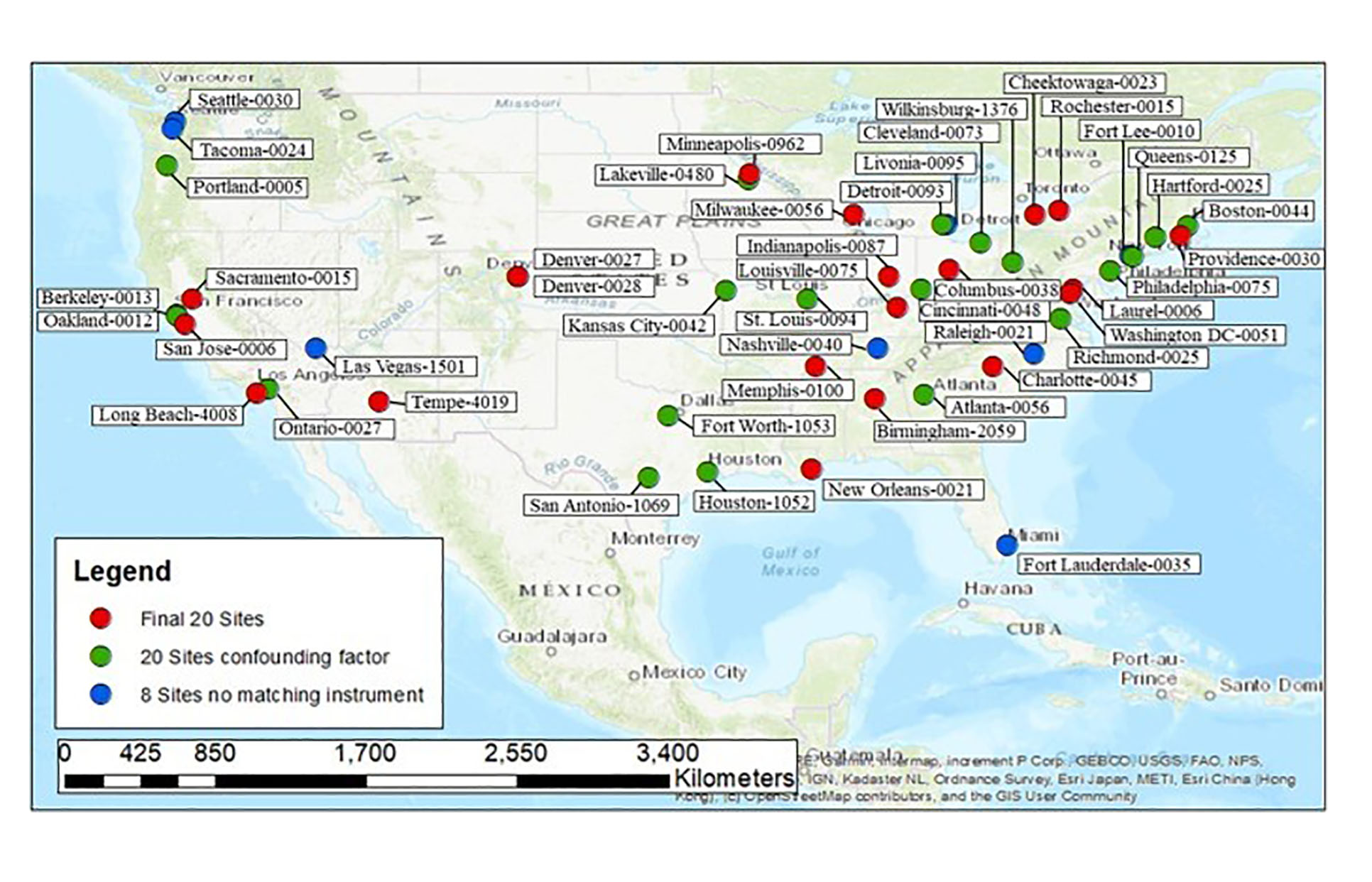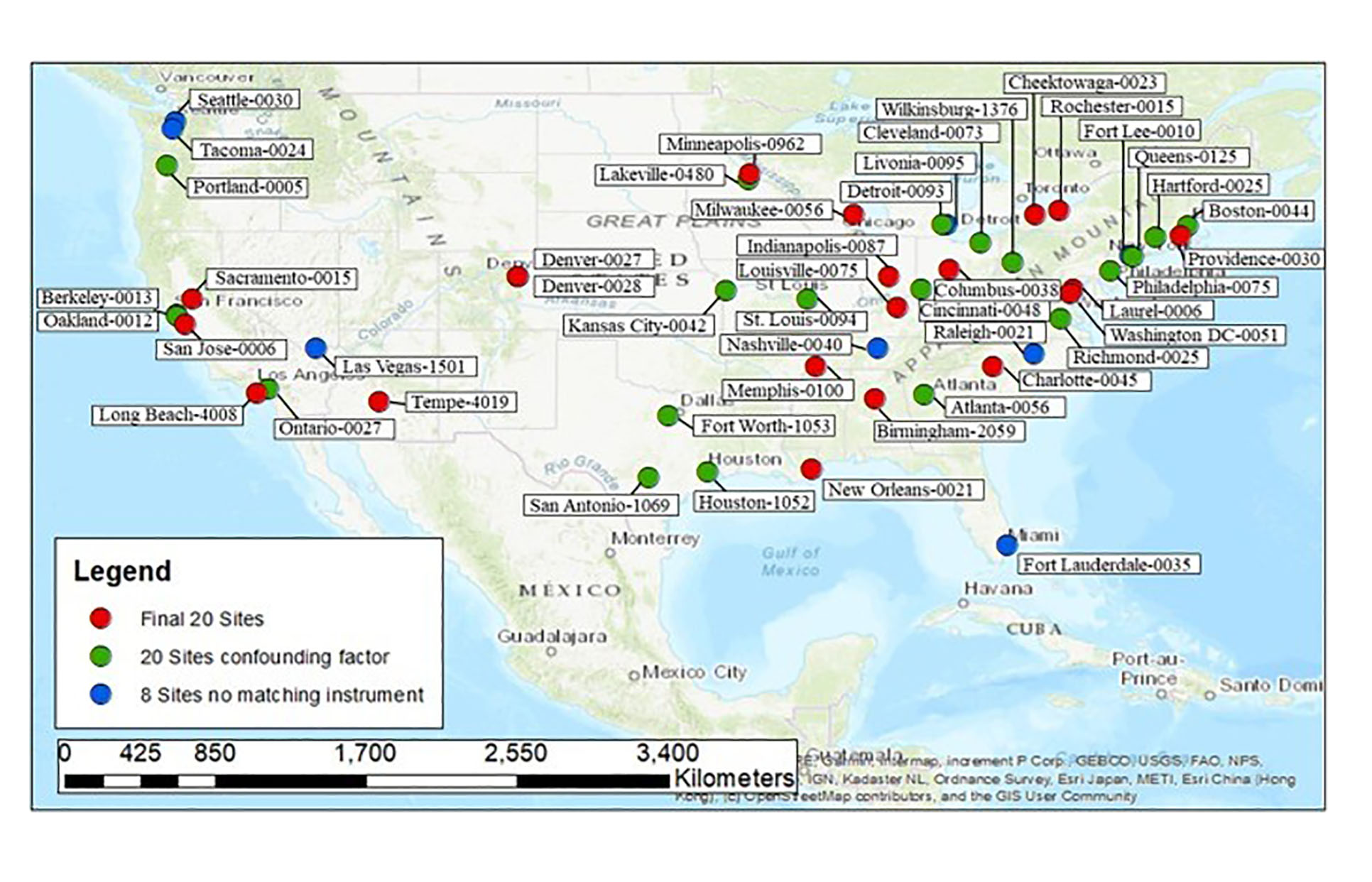Influence of Roadway Emissions on Near-Road PM<sub>2.5</sub>: Monitoring Data Analysis and Implications
Clients
Washington State Department of Transportation (WSDOT)
Near-Road Air Quality Transportation Pooled Fund (TPF)
Sonoma Technology scientists examined PM<sub>2.5</sub> concentrations measured at 48 near-road monitoring sites across the U.S. in 2017, identified roadway contributions to PM<sub>2.5</sub>, and forecasted how fleet-turnover could affect near-road concentrations over time. Results will help inform agencies as they identify transportation projects of local air quality concern (POAQC). <br>
This work was completed as part of Sonoma Technology's work on the <a href="/projects/4431">Transportation Pooled Fund.</a href><br>
The results of this study were published in <a href="https://www.sciencedirect.com/science/article/pii/S1361920920306295?via%3Dihub" target="_blank">Transportation Research Part D: Transport and Environment.</a href><br>
The abstract of the article is below: <br>
Transportation projects must undergo a transportation conformity hot-spot analysis if they are designated as projects of local air quality concern (POAQC). We examined concentrations of particulate matter 2.5 µm in aerodynamic diameter or smaller (PM<sub>2.5</sub>) measured in 2017 from 48 near-road monitoring sites across the U.S. Annual average PM<sub>2.5</sub> increments, the difference between near-road and background PM<sub>2.5</sub>, were between 0.1 ± 0.2 µg/m<sup>3</sup> and 2.0 ± 0.2 µg/m<sup>3</sup> for sites without noted confounding factor(s). The highest PM<sub>2.5</sub> increment from monitors ten or more meters from the roadway was 1.4 ± 0.2 µg/m<sup>3</sup>. Using modeled national average exhaust emissions, and associated near-road contribution to PM<sub>2.5</sub>, the upper bound of 2.0 ± 0.2 µg/m<sup>3</sup> is projected to decrease 30% from 2017 to 2040, for the types of highways assessed here, assuming a roadway with 8% heavy-duty diesel vehicles and constant traffic volumes. These results can help inform transportation conformity POAQC designations.
This work was completed as part of Sonoma Technology's work on the <a href="/projects/4431">Transportation Pooled Fund.</a href><br>
The results of this study were published in <a href="https://www.sciencedirect.com/science/article/pii/S1361920920306295?via%3Dihub" target="_blank">Transportation Research Part D: Transport and Environment.</a href><br>
The abstract of the article is below: <br>
Transportation projects must undergo a transportation conformity hot-spot analysis if they are designated as projects of local air quality concern (POAQC). We examined concentrations of particulate matter 2.5 µm in aerodynamic diameter or smaller (PM<sub>2.5</sub>) measured in 2017 from 48 near-road monitoring sites across the U.S. Annual average PM<sub>2.5</sub> increments, the difference between near-road and background PM<sub>2.5</sub>, were between 0.1 ± 0.2 µg/m<sup>3</sup> and 2.0 ± 0.2 µg/m<sup>3</sup> for sites without noted confounding factor(s). The highest PM<sub>2.5</sub> increment from monitors ten or more meters from the roadway was 1.4 ± 0.2 µg/m<sup>3</sup>. Using modeled national average exhaust emissions, and associated near-road contribution to PM<sub>2.5</sub>, the upper bound of 2.0 ± 0.2 µg/m<sup>3</sup> is projected to decrease 30% from 2017 to 2040, for the types of highways assessed here, assuming a roadway with 8% heavy-duty diesel vehicles and constant traffic volumes. These results can help inform transportation conformity POAQC designations.
Air Quality
Applied Research
Emissions
Exposure
Measurements
Transportation


